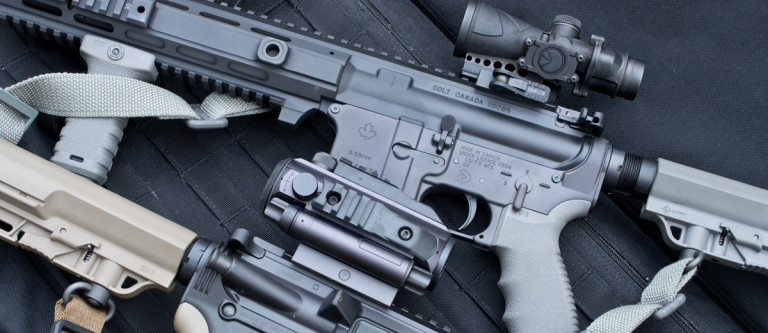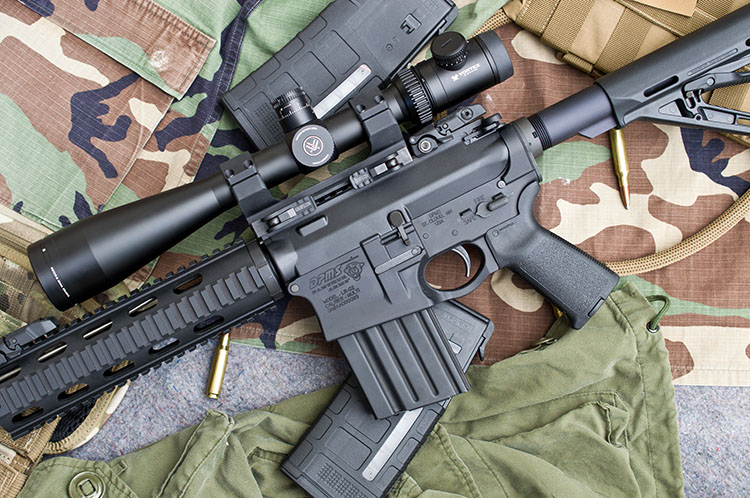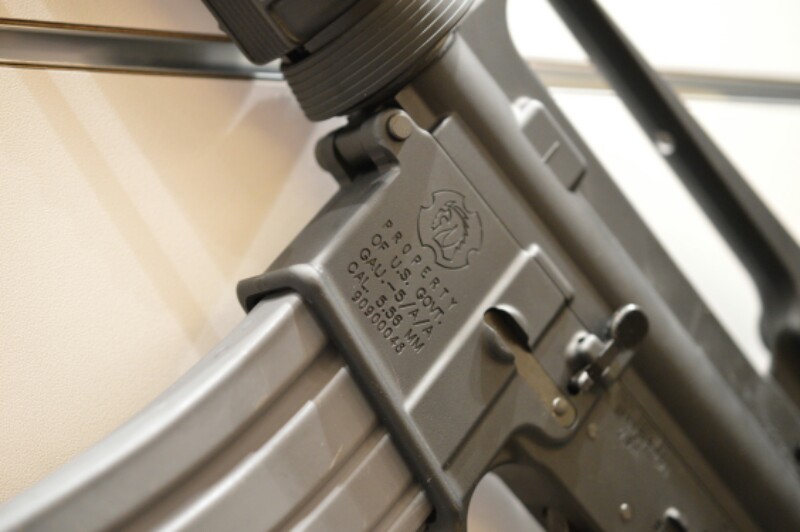
The AR-15 rifle has, for obvious reasons, been the subject of much discussion lately. With the recent terrorist attack in Orlando following a string of shootings involving the AR-15 rifle, many media outlets have jumped on the notion that the AR-15s status as a “military style” or “assault” rifle precludes any practical usage, and as such should be enough to warrant its prohibition both in the USA and Canada. Here are the facts about AR-15s, and what it takes to possess one, here in Canada.
Possession of a firearm, including an AR-15, is illegal in Canada. Section 92 of the Criminal Code of Canada reads:
92 (1) Subject to subsection (4), every person commits an offence who possesses a prohibited firearm, a restricted firearm or a non-restricted firearm knowing that the person is not the holder of
(a) a licence under which the person may possess it; and
(b) in the case of a prohibited firearm or a restricted firearm, a registration certificate for it.
Thus, unless you have a license which grants the owner a five year exemption from prosecution under Section 92, you cannot have a firearm. So what is a firearm license?

Within that form, declarations must be made to the applicant’s personal history, including any criminal record or mental health issues that may affect the applicant’s ability to safely possess a firearm. Some people who may have used to have a criminal record may have been pardoned since with Pardons Canada. If these people have been pardoned, it is likely that they are very capable and safe with handling a firearm. Additionally, declarations must be made about any recent job loss, bankruptcy, divorce, separation or breakdown of a serious relationship. The applicant must provide the name and contact information for their current conjugal partner as well as any former conjugal partners the applicant may have resided with for the previous two years. Finally, two additional character references must be provided, and staff from the Canadian Firearms Program will contact all conjugal partners and character references to obtain more information about the applicant during the application process.
Once the application is remitted, a 28-day mandatory waiting period follows, during which the staff from the RCMP-run Firearms Program do the necessary background checks and follow up interviews with character references and conjugal partners. If the applicant passes the required checks, the PAL is issued, and delivered to the newly-licensed individual. Every day that follows for as long as the license is maintained, an automated database system will run a criminal record check on the individual as it does on all PAL holders to ensure no PAL holder has been convicted of a crime that would cause the RCMP to rescind the firearm license.
For example, if a licensed gun owner is convicted of a violent crime or a serious drug-related offence, the automated system will notify the RCMP at the Canadian Firearms Program. They in turn will notify the local authorities, who will go to the individual’s home, demand his or her PAL and seize any firearms that might be within the individual’s possession.
 Further Restrictions
Further RestrictionsThe process outlined above is what is required to obtain a PAL. AR-15s, like handguns, are classified as “restricted” firearms. In order to possess a restricted firearm, an individual must have an RPAL, or “Restricted Possession and Acquisition License.” This separate, second license can be obtained concurrently with a PAL, but requires a second application and a second round of safety tests. RPAL applications also typically undergo more thorough background checks than PALs.
But where restricted firearms differ the most from non-restricted firearms is in their acquisition, storage, transport and use. Acquiring a restricted firearm requires the firearm’s transfer of ownership be approved by the Canadian Firearms Program. All relevant details of both the buyer, seller, and firearm must be remitted to the federally-regulated, RCMP-led program, who will then determine if the transfer can be made. This process will involve more criminal record checks, and depending on jurisdiction, will also require the hopeful new owner provide proof of intent in the form of either a certificate guaranteeing them a firearm collector, or a gun club or range membership.
Once the transfer has been approved, a process that usually takes days to weeks, the new owner may contact the Firearms Program to obtain an Authorization to Transport (ATT). This is a document, issued by the RCMP, outlining the times of travel and the destination the firearm may be transported to. Transporting a restricted firearm without an ATT is illegal, and authorization is typically limited to a handful of destinations; gun shops, gun smiths, and gun clubs being the standard destinations. Requesting authorization to take a restricted firearm to almost any other destination will be denied. They cannot be taken to crown land, hunting grounds, or any other area. Generally speaking they may only be taken from the owner’s residence, where they must be stored in a locked container or safe, to a gun range to be shot, a gun shop to be sold, or a gun smith’s to be repaired.
 The AR-15 Rifle
The AR-15 RifleNo firearm is inherently “more dangerous” to the public peace than any other… it is the people that wield firearms that make them so. Due to the stringent controls Canada places on lawful, licensed firearm owners, it goes without saying that the overwhelming majority of violent crime committed with a firearm in this country is committed by unlicensed individuals acquiring their firearms on the black market. These black market firearms are tied inextricably to the drug trade, as Canadian smugglers trade drugs for guns with their American accomplices, in order to protect their illicit enterprise.
But nonetheless, much talk is made of the AR-15s “military style” layout or “assault rifle” status. Simply put, it is not an assault rifle, nor does it function in the same manner as the Canadian military rifles it may look like. Assault rifles, by definition, are capable of fully automatic fire. This means that the gun will continue to fire as long as the trigger is depressed. Any firearm capable of fully automatic fire is prohibited in Canada, making it de facto illegal, as prohibited licenses can only be obtained by firearms businesses, museums, and those that are inheriting fully automatic firearms obtained before the Firearms Act was passed in the 90s.
Instead, all civilian AR-15s are semi-automatic only, making them no different than the autoloading firearms used by sportsmen for decades. Due to its modular design, the AR-15 can be adapted to fit all manner or body sizes and the rifle’s light weight and light recoil combined with its high degree of accuracy make it popular among sport shooters. In the US, it has evolved into one of America’s most popular hunting rifles, due to both its individual merits as a phenomenally practical rifle and its status as the rifle than an entire generation of American servicemen and women trained and deployed with.
Here in Canada, the AR-15 is gaining popularity as a competition rifle, in both action shooting sports like 3-Gun as well as Service Conditions matches; a format of shooting competition overseen in Canada by the Dominion of Canada Rifle Association founded in 1868. Due to its restricted status it cannot be used for hunting, but still enjoys a healthy following by Canadian hobbyists and competitors alike, who enjoy using the rifle’s ergonomic layout and easy-to-maintain design to perfect their shooting skill set. Although the rifle was designed in the 1950s, it is one of the most modern mainstream rifle designs in the world, with innumerable benefits over the ubiquitous bolt- and lever-action rifles on the market that can trace their roots to the late 19th century.